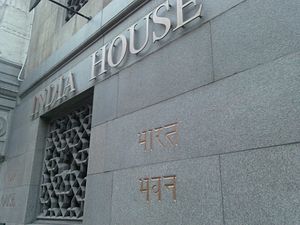After a marathon election season, where voting took place around the country for a period of well over a month in the middle of scorching weather, India elected its 15th prime minister, the Bharatiya Janata Party’s candidate Narendra Modi.
As Modi took oath and entered the country’s highest office on May 26, he announced that veteran BJP leader Sushma Swaraj would take over as India’s new foreign minister. A revamp of the conventional workings of India’s Ministry of External Affairs (MEA) is expected, as Modi plans to make the topic of trade the department’s central focus.
There are various ideas being floated around the new government as to how to incentivize and reform the foreign ministry to reflect India’s image as a premiere investment destination. Last year, Modi said that with the changing world, the main goal for a foreign ministry today is to attract trade and investment, unlike in the Cold War era.
However, these reforms will not be easy, specifically in a system where institutional changes require tectonic political and parliamentarian shifts. But the time is ripe for these changes to happen as India looks to mold its story – specifically in the context of Asia – via trade, business, development and prosperity.
The MEA has over the past few years tried, within its limits, to expand its ranks’ expertise, although it must deal with a rigid process by which hiring from outside the Indian civil services is not allowed. This is now being challenged at the ground level, with the MEA looking to hire experts and professionals on a contractual basis. Officials say to be able to hire permanently, parliamentary reforms are required, and budgets need a more significant boost.
Other ideas being discussed include empowering the MEA to take departments that are currently part of other ministries under its own ambit. This includes the important Directorate General of Foreign Trade (DGFT), currently under the Ministry of Commerce, and other departments, such as those handling India’s dealings with the Intergovernmental Panel on Climate Change (IPCC), and other environmental negotiations.
The basic idea behind the possible regeneration of the MEA is that the ministry should be in control of much of the country’s multilateral negotiations. Even though various ministries, such as the Ministry of Environment and Forestry and the Ministry of Science and Technology, do try and work in sync with the MEA, the bureaucratic structure of the system prevents the smooth functioning of inter-ministerial decision making. This process is currently ardent and time consuming, with the smallest decisions taking months.
A prevailing example is the issue of domestic servants travelling with Indian diplomats abroad, which is highlighted by the recent and ongoing diplomatic entanglement between New Delhi and Washington over the Devyani Khobragade case. According to officials at the MEA, the ministry has been trying to get the domestic help of its bureaucrats under the ambit of the ministry as salaried employees. Highlighting budgetary constraints, officials say this issue has been bouncing between the MEA and the Indian Finance Ministry for nearly a year.
Hiring at the MEA is still centered around the Indian civil services examination. The idea of hiring from “outside” requires further structural reforms orchestrated by the parliament, along with bureaucratic willingness. However, the MEA has started to expedite the process of incorporating expert representatives from other ministries such as commerce, defense, environment, and so on. This causes other issues, as other ministries are also facing shortages of qualified staff with specific expertise, and with the private sector still largely inaccessible, the ministry hopes for a further liberalization of rules and regulations to allow it to tap the best talent possible.
Numbers wise, the MEA today does not stand up to the expectations of a country of more than 1.3 billion people. In total, the ministry still only employs around 1,800 people, of whom about 800 make up its core India Foreign Services Officers (IFS) ranks. The rest are a mix of the IFS “B” officers, attaches, translators, lawyers and so on.
As the new government of Modi looks to make institutional changes to crucial ministries such as the MEA, his biggest challenge will be taming the bureaucracy itself. Many of these changes may lead to the reshuffling of posts, offices, officers and their entitlements, which in turn may lead to resistance for such reforms. However, this governmental change in New Delhi offers the best time to make these much awaited reforms that have stalled the evolution of ministries such as the MEA, which are trying to catch up with the demands of a modern, multilateral diplomacy.
Kabir Taneja is a journalist covering Indian foreign affairs and energy sector for The Sunday Guardian, The New York Times (India Ink), Tehelka, The Indian Republic and others. He is also a Scholar at The Takshashila Institution.

































